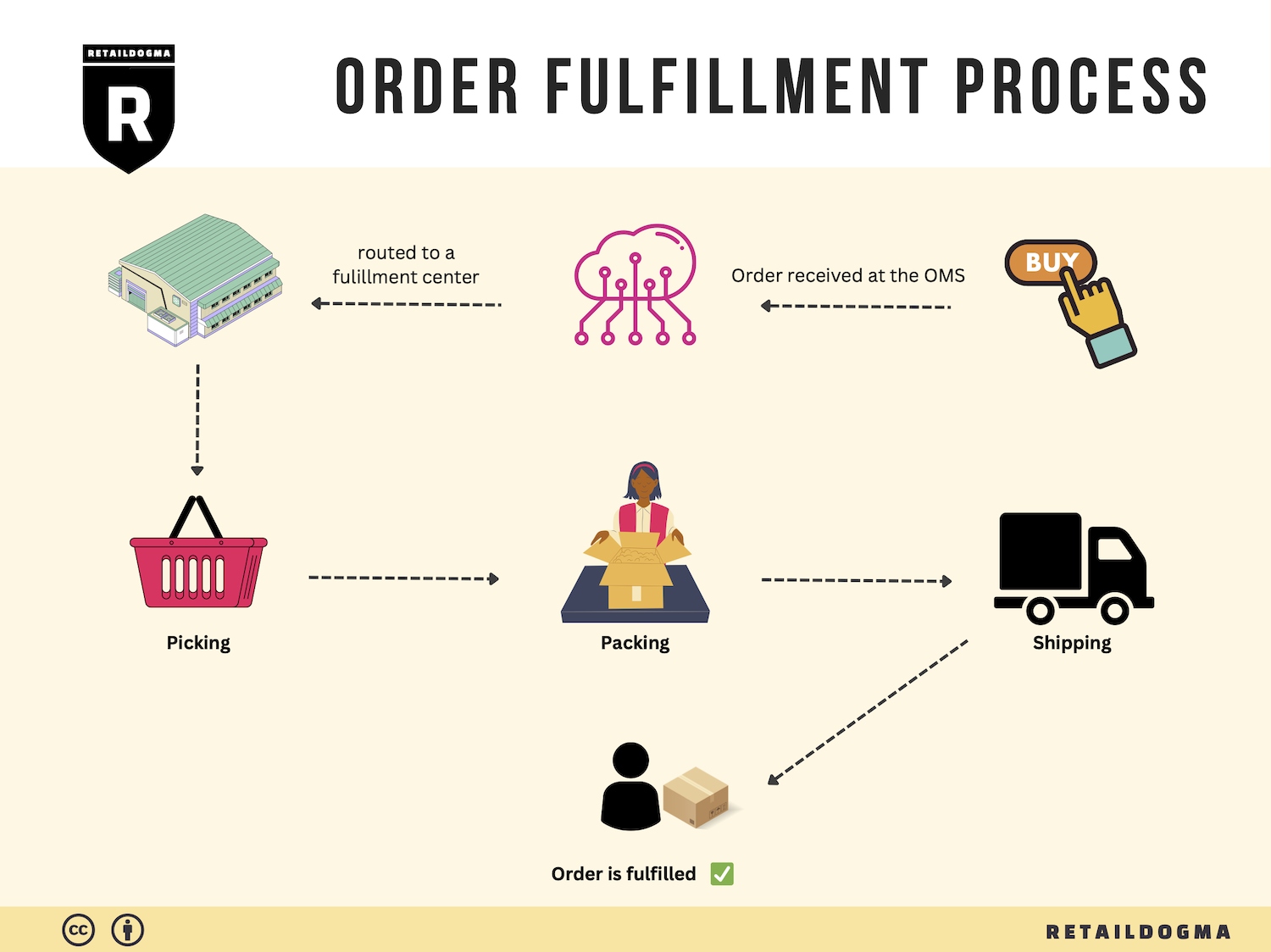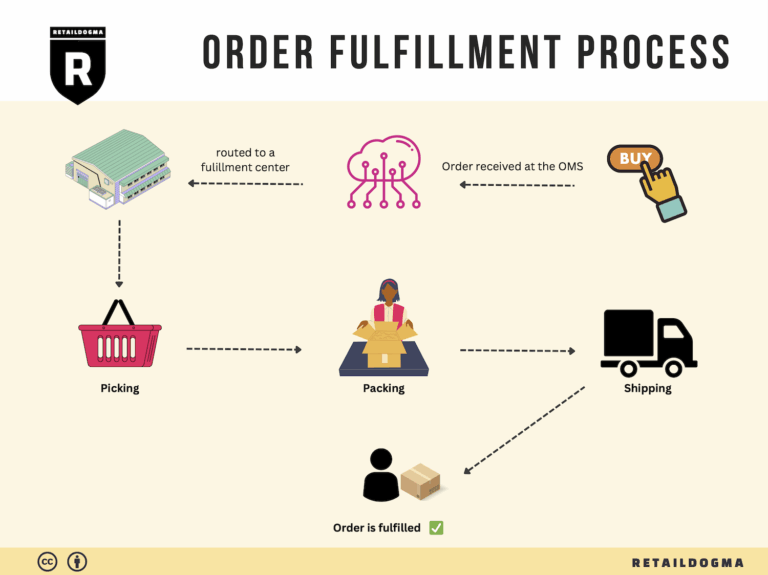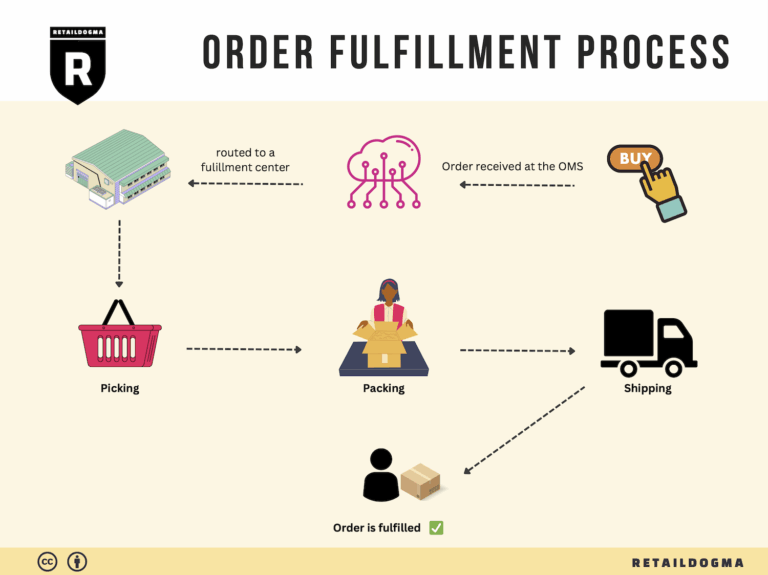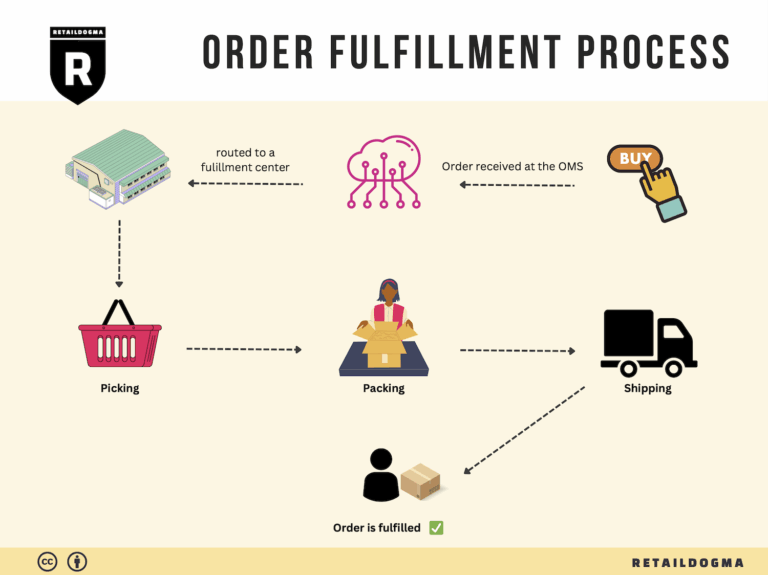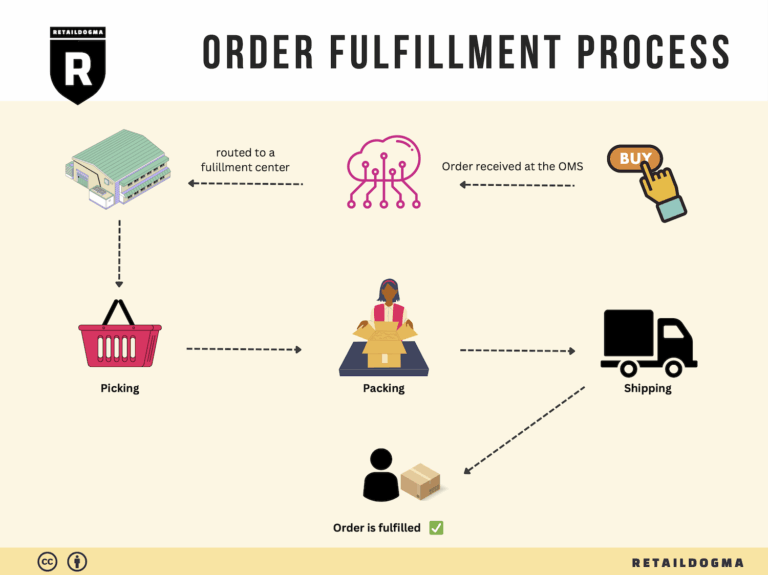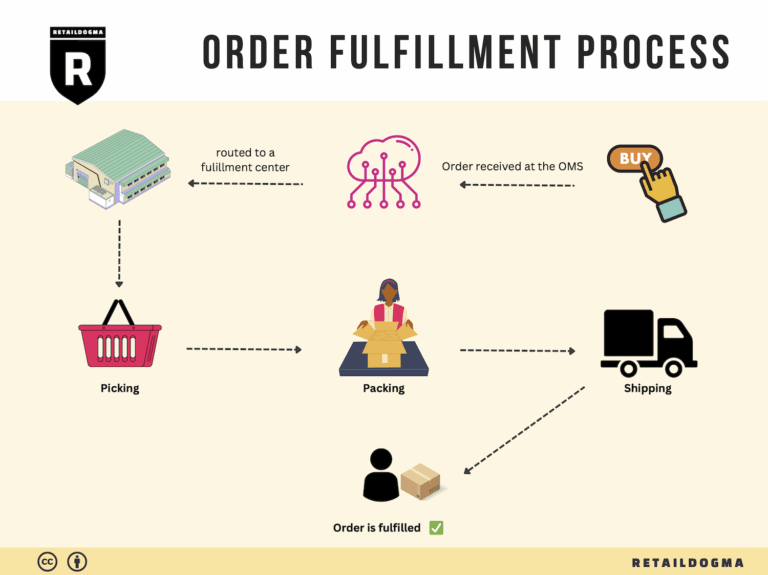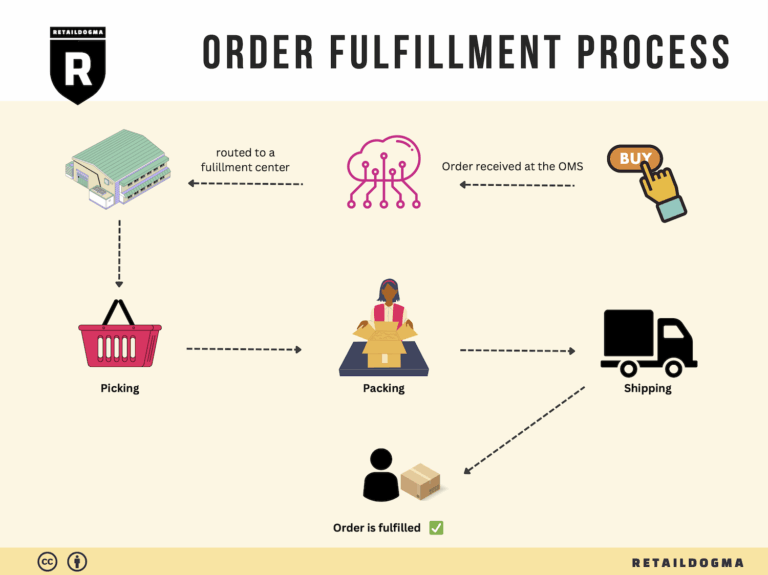How Order Fulfillment Works: A Step-by-Step Guide for Businesses
What is E-commerce Fulfillment? An Introduction for Growing Businesses
Understanding E-commerce Fulfillment
As a growing online business, one of the most significant challenges you may face is the overwhelming task of packing and shipping orders. Managing this process can quickly become a bottleneck, consuming valuable time and resources that could be better spent on strategic growth initiatives. E-commerce fulfillment is the key to alleviating this pain point—it encompasses the entire process of getting a product from your inventory to your customer’s doorstep.
At its core, fulfillment involves several critical steps: receiving inventory, processing orders, picking and packing products, and finally, shipping them to customers. For businesses scaling their operations, understanding fulfillment options and strategies is essential. This guide aims to demystify e-commerce fulfillment by exploring various fulfillment models, including Third-Party Logistics (3PL), Fulfillment by Amazon (FBA), and in-house fulfillment. Each model has its own set of advantages and challenges, and knowing which one suits your business can significantly impact your efficiency and customer satisfaction.
We will delve into the core services involved in fulfillment, from inventory management and order processing to shipping and returns handling. Additionally, we will provide insights on how to choose the right fulfillment partner, a decision that can either streamline your operations or create additional headaches. Factors to consider include the level of customization required, shipping speed, and the scalability of the fulfillment provider’s services.
Pricing is another critical aspect of e-commerce fulfillment. We will break down the various costs associated with different fulfillment models, helping you understand what to expect and how to budget effectively. By providing a comprehensive overview of these elements, our goal is to empower you to make informed decisions about your logistics strategy.
Ultimately, this guide is designed to equip you with the knowledge and tools necessary to navigate the complexities of e-commerce fulfillment. By optimizing your fulfillment process, you can focus on what truly matters—growing your business and delighting your customers.
What You’ll Learn In This Guide
- What is E-commerce Fulfillment? An Introduction for Growing Businesses
- The Order Fulfillment Process: From ‘Buy’ Button to Customer’s Door
- Comparing Fulfillment Models: In-House vs. 3PL vs. Dropshipping
- A Deep Dive into Amazon FBA: Pros, Cons, and Who It’s For
- Core Services Offered by Fulfillment Centers
- How to Choose a Fulfillment Partner: A 6-Point Checklist
- Understanding Fulfillment Pricing: A Breakdown of Common Fees
- Frequently Asked Questions (FAQs) about Fulfillment
- Conclusion: Is Outsourcing Fulfillment the Right Move for Your Business?
- Important Disclaimer
The Order Fulfillment Process: From ‘Buy’ Button to Customer’s Door
1. Receiving Inventory
The order fulfillment process begins with the receiving of inventory, which is a critical step in ensuring that the products are available for future orders. When your inventory arrives at your fulfillment center, it must be checked against purchase orders to confirm that the correct quantities and items have been delivered. This step typically involves assigning Stock Keeping Units (SKUs) to each product, which serve as unique identifiers that help streamline inventory management.
This step is important because accurate inventory receipt lays the foundation for efficient order fulfillment. Any discrepancies in this stage can lead to stockouts or overstock situations, both of which can negatively impact your subscription service’s reliability. Ensuring that inventory is received correctly not only improves operational efficiency but also enhances customer satisfaction by minimizing errors in the shipping process.
2. Warehouse Storage
Once inventory is received, it needs to be stored properly within the warehouse. This involves organizing products in a way that optimizes space and facilitates easy access for future order picking. Effective warehouse storage utilizes methods such as ABC analysis, which categorizes items based on their sales volume and turnover rates, allowing for more frequently picked items to be placed closer to the packing area.
Proper storage is crucial because it influences the overall efficiency of the picking process. A well-organized warehouse minimizes the time spent locating products, which is especially important for subscription box fulfillment where timely delivery is expected. Additionally, good storage practices help maintain product quality and prevent damage, ensuring that customers receive their products in excellent condition.
3. Order Picking
When an order is placed, the fulfillment center generates a pick list. This list details the items that need to be gathered for each order, including the quantities and locations within the warehouse. Order picking can be executed through various methods, such as single order picking, batch picking, or zone picking, depending on the volume and complexity of orders.
The picking process is pivotal because it directly affects the speed and accuracy of order fulfillment. The quicker and more accurately items are picked, the more efficiently orders can be processed and shipped. This is especially critical for subscription box businesses, where customers expect to receive their curated selections on a regular schedule. Implementing advanced picking technologies, such as barcode scanners or mobile picking devices, can further enhance accuracy and efficiency in this step.
4. Order Packing
After the items are picked, they move to the packing stage, where they are prepared for shipment. This process involves verifying the picked items against the order details to ensure accuracy, followed by packing the items into boxes. Custom packaging solutions can be used to enhance the unboxing experience, such as incorporating branded inserts or using specialized packing materials.
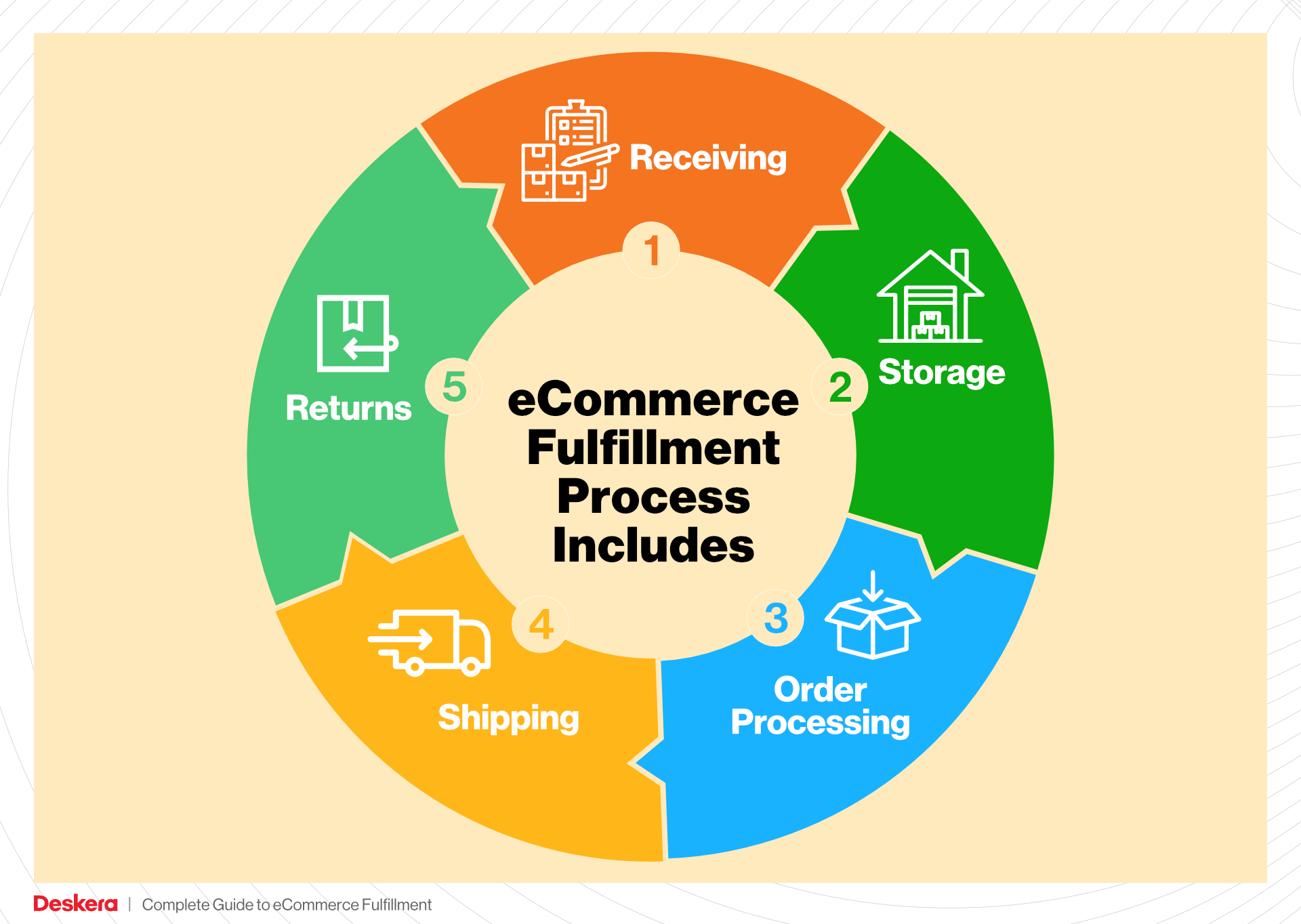
Packing is an essential step as it not only protects the products during transit but also contributes to the overall customer experience. Subscription box businesses often focus on creating a memorable unboxing experience, which can enhance customer loyalty and encourage word-of-mouth referrals. Ensuring that the packing process is executed with care and attention to detail can significantly influence customer satisfaction and retention.
5. Shipping & Delivery
The final step in the fulfillment process is shipping and delivery. Once the order is packed, shipping labels are generated, and the packages are handed off to carriers for delivery. The choice of shipping methods and carriers can vary based on factors such as delivery speed, cost, and geographic location. It’s essential to provide customers with tracking information so they can monitor their shipments.
Shipping and delivery are critical components of the order fulfillment process because they directly impact customer satisfaction. Timely and reliable shipping ensures that customers receive their subscription boxes as expected, fostering trust and loyalty. Subscription businesses should consider partnering with multiple carriers to optimize shipping options and costs, ensuring that they can meet customer expectations consistently.
By understanding and optimizing each step of the order fulfillment process, subscription box businesses can enhance their operational efficiency, improve customer satisfaction, and ultimately scale their operations successfully.
Comparing Fulfillment Models: In-House vs. 3PL vs. Dropshipping
Fulfillment Model Comparison
| Model | Who Handles Inventory | Best For (Business Stage) | Key Advantage | Key Disadvantage |
|---|---|---|---|---|
| In-House Fulfillment | Business | Startups, Small to Medium-Sized Enterprises | Full control over inventory and quality | High operational costs and complexity |
| Third-Party Logistics (3PL) | Fulfillment Provider | Growing Businesses | Scalability and expertise | Less control over fulfillment process |
| Dropshipping | Supplier | New Entrepreneurs, Low-Cost Startups | Low upfront investment and risk | Lower profit margins and potential quality issues |
In-House Fulfillment
In-house fulfillment involves managing the entire process of storing, picking, packing, and shipping products directly from your own facilities. This model is particularly advantageous for startups and small to medium-sized enterprises that want to maintain full control over their inventory and the customer experience. By keeping fulfillment in-house, businesses can closely monitor quality and inventory levels, ensuring that each subscription box meets their standards. This model also allows for customization in packaging and presentation, which is critical for subscription services where unboxing experiences can significantly impact customer satisfaction.
However, in-house fulfillment comes with considerable challenges. It often requires significant investment in warehouse space, staffing, and logistics management, which can lead to high operational costs. Additionally, as order volumes increase, the complexity of managing fulfillment processes can become overwhelming, potentially impacting shipping times and overall efficiency. Businesses need to be prepared for the demands of scaling their operations while maintaining quality and speed in fulfillment.
Third-Party Logistics (3PL)
Third-party logistics (3PL) providers offer a comprehensive solution for businesses looking to outsource their fulfillment operations. This model is best suited for growing businesses that have moved beyond the startup phase and are looking to scale efficiently. By partnering with a 3PL, companies can leverage the provider’s expertise in logistics, warehouse management, and shipping. This allows them to focus on core business activities such as marketing and product development, while benefiting from the operational efficiencies that a 3PL can provide.
One of the key advantages of using a 3PL is scalability. As order volumes fluctuate, a 3PL can adjust resources accordingly, ensuring that businesses do not over-invest in infrastructure that may not be utilized during slower periods. However, outsourcing fulfillment also means relinquishing some control over the process. This can be a disadvantage if the 3PL does not meet the company’s standards for quality or if there are communication issues that lead to errors in order fulfillment. Businesses must conduct thorough research to select a reliable 3PL that aligns with their operational needs and customer expectations.
Dropshipping
Dropshipping is a fulfillment model where the retailer does not hold inventory but instead purchases items from a supplier only after a sale is made. This model is particularly appealing for new entrepreneurs and those looking to start an e-commerce business with minimal upfront investment. Since there are no inventory costs or warehouse management responsibilities, dropshipping allows business owners to focus primarily on marketing and customer acquisition.
The primary advantage of dropshipping is its low-risk nature. Businesses can test new products without the need to invest in inventory upfront, making it easier to pivot based on market demand. However, dropshipping also has significant disadvantages, including lower profit margins and potential quality control issues. Since the retailer has no direct control over the fulfillment process, any errors made by the supplier can directly affect customer satisfaction. Additionally, shipping times can be longer, especially if products are sourced from international suppliers. Entrepreneurs should weigh these factors carefully when considering dropshipping as a fulfillment strategy for their subscription box service.
By understanding the nuances of each fulfillment model, e-commerce business owners can make informed decisions that align with their growth objectives and operational capabilities. Each model presents unique advantages and challenges, and the right choice will depend on the specific needs and goals of the business.
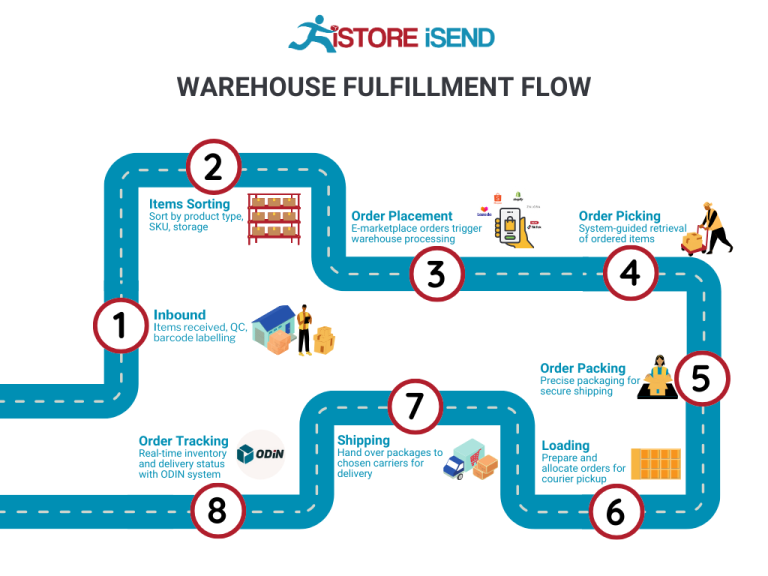
A Deep Dive into Amazon FBA: Pros, Cons, and Who It’s For
Understanding Fulfillment by Amazon (FBA)
Fulfillment by Amazon (FBA) is a service that enables e-commerce sellers to store their products in Amazon’s fulfillment centers. Amazon takes care of storage, packaging, and shipping, as well as customer service and returns. This service allows businesses, especially smaller sellers, to leverage Amazon’s vast distribution network and customer base, while focusing on their core operations.
How FBA Works
-
Product Preparation and Shipment: Sellers prepare their products according to Amazon’s guidelines and ship them to Amazon’s fulfillment centers. This includes labeling and packaging products appropriately.
-
Storage: Once the products arrive at the fulfillment center, they are stored until an order is placed. Sellers are charged storage fees based on the amount of space their products occupy.
-
Order Fulfillment: When a customer places an order, Amazon picks, packs, and ships the product directly to the customer. This process is typically very quick, often with same-day or next-day shipping available for Prime members.
-
Customer Service and Returns: Amazon handles all customer service inquiries and returns for FBA orders, providing a seamless experience for both the seller and the customer.
-
Payment: After the product is sold, Amazon deducts its fees from the sale price and transfers the remaining amount to the seller’s account.
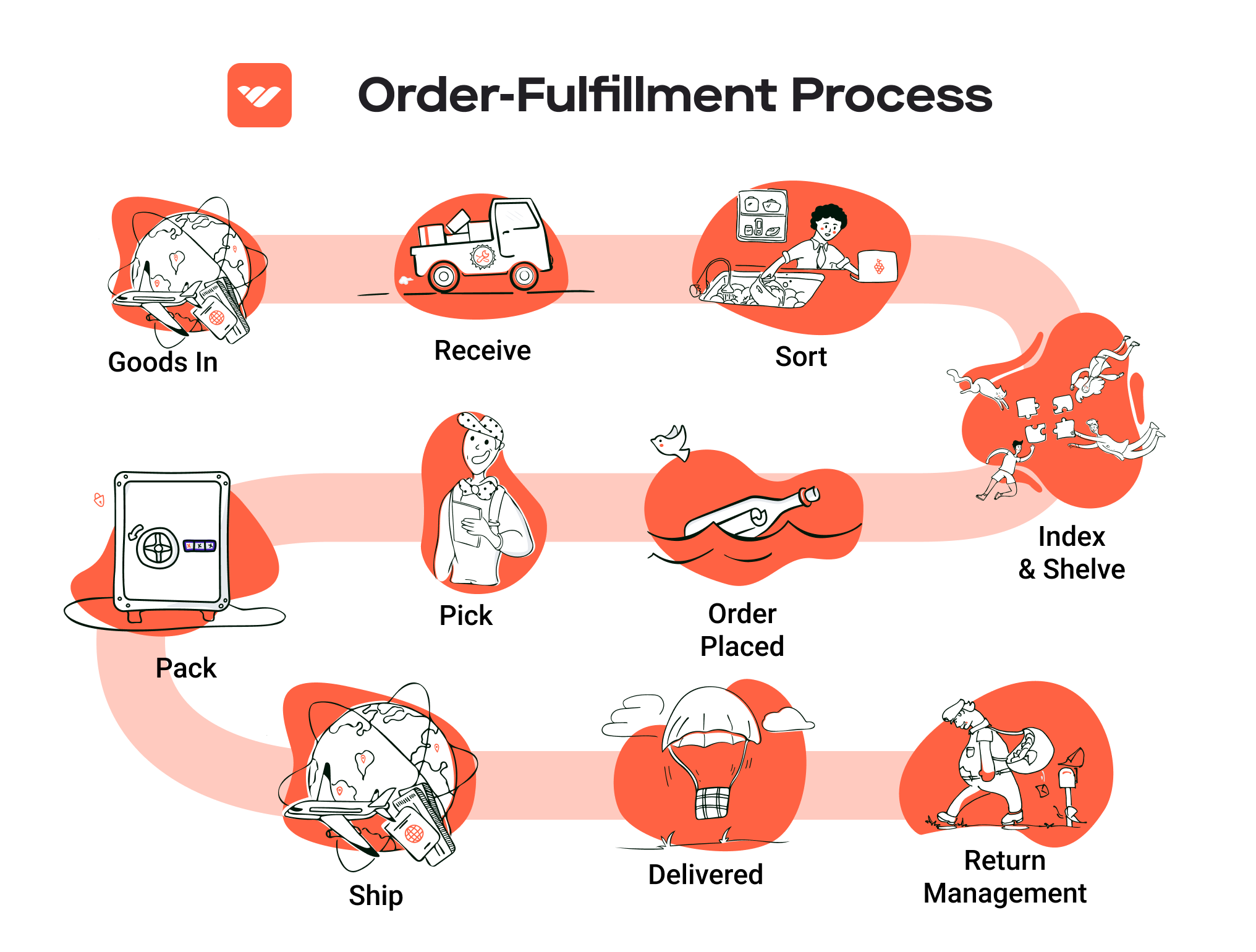
Pros of Using FBA
-
Prime Eligibility: One of the standout benefits of FBA is that it automatically qualifies products for Amazon Prime. This can significantly boost sales, as Prime members often prefer products that offer fast, free shipping.
-
Customer Trust: Amazon is a trusted brand with a robust reputation for customer service. By using FBA, sellers can benefit from this trust, as customers are more likely to purchase products backed by Amazon’s fulfillment services.
-
Multi-Channel Fulfillment: FBA isn’t limited to just Amazon sales. Sellers can use FBA to fulfill orders from their own websites or other sales channels, allowing for streamlined operations across multiple platforms.
-
Scalability: FBA allows businesses to scale quickly without the need for significant investment in warehousing and logistics. Sellers can focus on marketing and product development while Amazon manages fulfillment.
-
Time Savings: Outsourcing logistics to Amazon frees up valuable time for sellers to focus on growth strategies, customer engagement, and other critical business operations.
Cons of Using FBA
-
High Fees: FBA comes with various fees, including storage fees and fulfillment fees, which can eat into profit margins. Sellers need to carefully analyze their costs to ensure that FBA is financially viable.
-
Strict Inventory Rules: Amazon has stringent rules regarding inventory management. Sellers must keep track of their stock levels and ensure that they comply with Amazon’s policies to avoid penalties or account suspensions.
-
Commingling Risks: With FBA, products from different sellers may be stored together, which can lead to issues if a customer receives a product that is not theirs. This commingling can result in negative customer experiences and increased return rates.
-
Loss of Control: By outsourcing fulfillment to Amazon, sellers give up a degree of control over the customer experience. This includes packaging, branding, and the overall unboxing experience, which can be critical for subscription box models.
-
Complexity in Returns: While Amazon handles returns, this can sometimes complicate inventory management for sellers. Returned items may not always be returned to the seller’s inventory correctly, which can lead to stock discrepancies.
Who is FBA Best For?
FBA is particularly well-suited for certain types of businesses:
-
Small to Medium-Sized Sellers: Businesses that do not have the resources to manage their own fulfillment operations can benefit significantly from FBA. It allows them to leverage Amazon’s infrastructure and expertise.
-
Brands with High Volume Sales: Sellers with high sales volume who can absorb the associated fees may find FBA advantageous, especially those whose products are eligible for Prime shipping.
-
E-commerce Entrepreneurs Looking to Scale: For entrepreneurs focused on growth, FBA provides an opportunity to scale without the logistical challenges of managing warehousing and shipping.
-
Sellers with Diverse Product Lines: Those who offer a variety of products can benefit from FBA’s multi-channel fulfillment capabilities, allowing them to streamline operations across different sales platforms.
-
Brands Prioritizing Customer Experience: If customer trust and satisfaction are critical to your business model, FBA can help enhance the shopping experience through reliable fulfillment and customer service.
In conclusion, while FBA presents a compelling opportunity for e-commerce sellers to streamline their operations and tap into Amazon’s vast customer base, it is essential to weigh the pros and cons carefully. Understanding your business’s specific needs and how FBA aligns with your goals will be crucial in making an informed decision.
Core Services Offered by Fulfillment Centers
Inventory Management & Warehousing
Inventory management and warehousing are foundational services provided by fulfillment centers, crucial for e-commerce businesses, especially those operating subscription box models. This service involves the systematic tracking and storage of products that businesses sell. Fulfillment centers use sophisticated inventory management systems to monitor stock levels, track incoming and outgoing shipments, and predict inventory needs based on sales data and trends.
Benefits:
-
Enhanced Accuracy: By utilizing automated systems for inventory tracking, fulfillment centers reduce the risk of human error, which can lead to stock discrepancies and customer dissatisfaction.
-
Real-Time Visibility: Businesses gain access to real-time data about their inventory levels, allowing for better decision-making. This visibility helps prevent stockouts or overstock situations, which are particularly critical for subscription box services that rely on timely fulfillment.
-
Scalability: As a business grows, its inventory management needs become more complex. Fulfillment centers provide scalable solutions that can adapt to increased demand, ensuring that businesses can meet customer expectations without significant additional investment in warehouse space or staff.
-
Cost Efficiency: Outsourcing warehousing can be more cost-effective than maintaining an in-house solution. Businesses can save on overhead costs related to staffing, equipment, and facilities while benefiting from the fulfillment center’s expertise and infrastructure.
Pick and Pack Services
Pick and pack services are essential components of the fulfillment process, where individual items are selected from inventory (picked) and then packed into boxes for shipment to customers. This process is particularly crucial for subscription box services that may involve various products each month.
Benefits:
-
Efficiency: Fulfillment centers employ specialized teams and automated systems to streamline the picking and packing process. This efficiency not only speeds up order processing but also ensures that orders are filled accurately.
-
Customization: For subscription boxes that require personalized touches, fulfillment centers can accommodate custom packing requests, such as including branded inserts, packing materials, or unique configurations that enhance the customer experience.
-
Quality Control: Many fulfillment centers implement rigorous quality control measures during the pick and pack process. This ensures that the right products are selected and packed correctly, significantly reducing the chances of returns due to fulfillment errors.
-
Faster Shipping: With streamlined pick and pack operations, fulfillment centers can quickly process orders and ship them out, meeting the tight deadlines often associated with subscription services. This speed is crucial for maintaining customer satisfaction and loyalty.
Kitting and Assembly
Kitting and assembly involve the process of grouping multiple items together into a single package or kit. This service is particularly relevant for subscription box businesses that may offer curated selections of products each month, requiring careful assembly and presentation.
Benefits:
-
Enhanced Presentation: Kitting allows businesses to create visually appealing bundles that resonate with customers. A well-assembled subscription box can enhance the unboxing experience, leading to increased customer satisfaction and brand loyalty.
-
Time Savings: By outsourcing kitting and assembly to a fulfillment center, businesses save valuable time that can be redirected toward marketing, customer service, and product development. This is especially beneficial during peak seasons when order volumes are high.
-
Flexibility: Fulfillment centers can adapt to changes in product offerings or seasonal promotions, providing businesses with the flexibility to quickly assemble different kits without the need for significant investment in additional resources.
-
Cost-Effectiveness: Kitting can be labor-intensive, and outsourcing this service can often be more economical than handling it in-house. Fulfillment centers have the expertise and workforce to efficiently manage kitting, often at a lower cost than a business would incur by doing it themselves.
Returns Management (Reverse Logistics)
Returns management, or reverse logistics, refers to the processes involved in handling returned products. For subscription box services, managing returns effectively is crucial, as customers may return items for various reasons, including dissatisfaction or product defects.
Benefits:
-
Streamlined Processes: Fulfillment centers typically have established procedures for handling returns, making it easier for businesses to manage this often complex aspect of e-commerce. This includes inspecting returned items, restocking them, or disposing of them as necessary.
-
Customer Satisfaction: A smooth returns process can enhance customer satisfaction. When customers know they can easily return items, they are more likely to make a purchase, leading to higher conversion rates and customer retention.
-
Data Insights: Returns management can provide valuable insights into product performance and customer preferences. By analyzing return data, businesses can identify trends, such as frequently returned items, and make informed decisions about inventory and product offerings.
-
Cost Management: Efficient returns management can help reduce the costs associated with returns. Fulfillment centers often have the expertise to minimize loss and improve recovery rates, which is particularly important for subscription box businesses that may face higher return rates due to the nature of their offerings.
By leveraging these core services offered by fulfillment centers, e-commerce businesses, especially those in the subscription box sector, can streamline their operations, enhance customer experiences, and ultimately drive growth.
How to Choose a Fulfillment Partner: A 6-Point Checklist
Location & Warehouse Network
Importance:
The geographical location of your fulfillment partner’s warehouses can significantly impact shipping times and costs. A strategically located warehouse network ensures faster deliveries to your customers, which is crucial for subscription box businesses that thrive on timely shipments.
Questions to Ask:
– Where are your warehouses located, and how do these locations align with my primary customer base?
– Do you have multiple warehouses, and can you distribute inventory across these locations to optimize shipping?
– What shipping carriers do you work with, and how do they affect delivery times to my target markets?
Technology & Integrations
Importance:
In today’s e-commerce landscape, technology is the backbone of efficient operations. A fulfillment partner should provide robust technology solutions that integrate seamlessly with your e-commerce platform, enabling real-time tracking, inventory management, and automated order processing.
Questions to Ask:
– What technology platforms do you support for integration (e.g., Shopify, WooCommerce, Magento)?
– Can your system handle automated order processing for subscription models, including recurring billing and inventory updates?
– How do you ensure data security and compliance with privacy regulations?
Specializations (e.g., Cold Storage, Oversized Items)
Importance:
Different subscription boxes have unique requirements, such as temperature-sensitive products or oversized items. Choosing a fulfillment partner with the right specializations can prevent operational hiccups and ensure product integrity.
Questions to Ask:
– Do you have facilities that can accommodate my specific product needs (e.g., cold storage for perishable goods, specialized packaging for fragile items)?
– What is your experience with fulfilling subscription boxes similar to mine, and can you provide case studies or references?
– How do you handle quality control and compliance for specialized products?
Scalability & Capacity
Importance:
As your subscription box business grows, your fulfillment needs will evolve. A partner that can scale with your business will save you the hassle of changing providers mid-growth, which can disrupt service and customer satisfaction.
Questions to Ask:
– What is your current capacity for handling orders, and how can you scale if my order volume increases?
– Do you have plans for expansion or additional facilities to accommodate future growth?
– How do you handle peak seasons or sudden spikes in demand?
Pricing and Contracts
Importance:
Understanding the pricing structure and contract terms is vital for budgeting and ensuring profitability. A transparent pricing model helps avoid unexpected costs and ensures you can maintain healthy margins.
Questions to Ask:
– What is your pricing structure, including any additional fees (e.g., for storage, kitting, or returns)?
– Are there minimum order requirements or long-term contracts that I need to be aware of?
– How do you handle pricing adjustments for fluctuating shipping costs or changes in service levels?
Customer Support & Reviews
Importance:
Reliable customer support is essential for resolving issues swiftly and ensuring smooth operations. Additionally, checking reviews and testimonials from other businesses can provide insights into the partner’s reliability and performance.
Questions to Ask:
– What customer support options do you offer (e.g., phone, email, chat), and what are your response times?
– Can you provide references or case studies from other subscription box businesses that you’ve worked with?
– How do you handle problems or discrepancies in orders, and what is your process for resolving them?
Conclusion
Choosing the right fulfillment partner is a critical decision that can influence the success of your subscription box business. By carefully evaluating potential partners against this checklist, you can ensure that your chosen fulfillment provider aligns with your business needs and can support your growth effectively. Prioritize partners that exhibit reliability, transparency, and a strong alignment with your operational goals, and you’ll be well on your way to delivering exceptional experiences to your customers.
Understanding Fulfillment Pricing: A Breakdown of Common Fees
Initial Setup Fees
When partnering with a third-party logistics (3PL) provider for subscription box fulfillment, the initial setup fee is often the first cost you’ll encounter. This fee typically covers the onboarding process, which includes integrating your e-commerce platform with the fulfillment center’s systems, setting up inventory management protocols, and creating custom packaging options.
Setup fees can vary widely depending on the complexity of your operations and the services offered by the 3PL. For instance, if you require specialized kitting or assembly services for your subscription boxes, expect higher initial costs. Some providers may charge a flat fee, while others may base it on the number of products or SKUs you need to manage. To ensure a smooth onboarding experience, it’s crucial to clarify what services are included in the setup fee and what additional costs may arise.
Receiving Fees
Receiving fees apply when your inventory arrives at the fulfillment center. These charges typically cover the time and labor involved in unloading, inspecting, and storing your products.
The calculation of receiving fees usually depends on the volume of inventory being received, measured in either units or pallets. Some fulfillment providers may charge a flat rate per pallet or a variable rate based on the total number of items processed. For subscription box businesses, where inventory turnover can be frequent and substantial, understanding this fee structure is essential. To mitigate costs, ensure that your shipments are organized and labeled correctly, which can streamline the receiving process and potentially lower fees.
Storage Fees (per pallet/bin)
Storage fees are incurred for holding your inventory at the fulfillment center. These fees can be structured in various ways, typically charged either per pallet or per bin, depending on the provider’s storage setup.
For subscription box businesses, storage costs can fluctuate based on the seasonality of products and the volume of inventory maintained. It’s essential to note that many fulfillment centers operate on a monthly billing cycle for storage fees, so understanding the average amount of inventory you’ll need to store is vital for budgeting. Additionally, some providers may offer tiered pricing based on the volume of storage used; thus, negotiating for better rates as your business scales can be beneficial.
Pick & Pack Fees (per item/order)
Pick and pack fees are charged for the labor involved in retrieving products from storage and preparing them for shipment. This fee is typically calculated per item or per order, depending on how the fulfillment provider structures their pricing model.
For subscription boxes, where orders may contain multiple items or require specific assembly, understanding this fee is crucial. Some providers may charge a flat rate for picking orders and an additional fee for packing, while others may bundle these costs. To optimize costs, consider strategies such as bulk orders or minimizing the number of different SKUs in a single box to reduce the complexity of the picking process.
Shipping Fees
Shipping fees are often one of the most significant expenses associated with fulfillment. These fees can vary based on several factors, including the shipping carrier used, the destination, the weight and dimensions of the package, and the chosen shipping speed.
Most fulfillment providers negotiate shipping rates with carriers, allowing them to pass savings on to you. However, it’s essential to understand how these fees are calculated, as they can differ significantly based on your specific shipping requirements. Some providers may offer flat-rate shipping options, while others may charge based on actual shipping costs. To ensure accurate budgeting, request detailed information on how shipping fees are calculated and consider using multiple carriers to compare rates.
Tips for Getting an Accurate Quote
-
Provide Detailed Information: When requesting quotes, supply detailed information about your inventory, order volume, and specific fulfillment needs. This will help providers give you a more accurate estimate.
-
Ask About Hidden Fees: Inquire about any additional costs that may not be immediately apparent, such as fees for special packaging or handling of fragile items.
-
Compare Multiple Providers: Don’t settle for the first quote you receive. Compare several fulfillment companies to find the best combination of services and pricing that meets your needs.
-
Negotiate Terms: As your business grows, revisit your agreements with fulfillment providers to negotiate better rates based on increased volume or long-term contracts.
-
Review Contracts Carefully: Ensure you fully understand the terms of the agreement, including any clauses regarding price changes or additional fees that may apply.
By keeping these factors in mind, you can better navigate the complexities of fulfillment pricing and make informed decisions that align with your business goals.
Frequently Asked Questions (FAQs) about Fulfillment
1. What is subscription box fulfillment?
Subscription box fulfillment refers to the process of preparing and shipping products to customers on a recurring basis, typically monthly. It involves managing inventory, order processing, packing, and shipping to ensure that customers receive their curated or standard products on time.
2. When should I consider outsourcing my subscription box fulfillment?
Outsourcing is advisable when your subscription volume exceeds 100 boxes per month or when your fulfillment process requires extensive kitting and assembly that may overwhelm your in-house capabilities. A 3PL can efficiently manage shipping logistics, allowing you to focus on scaling your business.
3. How does subscription box fulfillment work?
The process generally involves several steps: receiving inventory, sharing order details with a fulfillment provider, picking and packing items, enhancing the unboxing experience with branded materials, and finally, shipping the packages to customers. Automation tools can streamline the order sharing process, improving efficiency.
4. What are the challenges of fulfilling subscription orders?
Key challenges include ensuring timely shipping, managing inventory effectively, maintaining quality control, and adapting to changes in product selection. These challenges can affect customer satisfaction and retention, making it crucial to have robust processes in place.
5. What is a 3PL (Third-Party Logistics Provider)?
A 3PL is a company that provides logistics services to businesses, including warehousing, order fulfillment, shipping, and inventory management. Partnering with a 3PL can help streamline your operations and allow you to scale more efficiently without the overhead of managing these processes in-house.
6. What is the difference between a warehouse and a fulfillment center?
A warehouse is primarily a storage facility for goods, while a fulfillment center focuses on processing and shipping orders. Fulfillment centers are equipped with technology and systems to handle order picking, packing, and shipping, making them more suitable for e-commerce businesses.
7. How much do fulfillment services cost?
Costs vary widely depending on factors such as order volume, complexity of kitting, storage needs, and shipping methods. Most fulfillment companies charge a combination of storage fees, picking and packing fees, and shipping costs. It’s essential to request detailed quotes from providers to understand the overall cost structure.
8. How can I ensure quality control in my subscription box fulfillment?
Implementing strict quality control measures, such as regular audits, using checklists during the packing process, and maintaining clear communication with your fulfillment provider, can help ensure that each box meets your quality standards. Additionally, consider using fulfillment partners with a proven track record of quality management.
9. What should I look for in a fulfillment partner for my subscription box business?
Key considerations include the provider’s ability to handle your specific kitting needs, customization options for packaging, integration capabilities with your e-commerce platform, reliability in shipping times, and customer service responsiveness. Assessing these factors will help ensure a good fit for your business.
10. How can I enhance the unboxing experience for my customers?
Enhancing the unboxing experience can involve using custom-branded packaging, including personalized inserts or thank-you notes, and adding unique touches like tissue paper or small gifts. A memorable unboxing experience can lead to increased customer satisfaction and word-of-mouth referrals.
Conclusion: Is Outsourcing Fulfillment the Right Move for Your Business?
Evaluating the Benefits of Outsourcing Fulfillment
Outsourcing your subscription box fulfillment can be a transformative move for your business, particularly as you scale. The key benefits include significant time savings, enhanced scalability, and access to specialized expertise.
By partnering with a fulfillment service, you free up valuable time that can be redirected towards strategic initiatives such as product development and marketing. Instead of being bogged down by the logistics of packing and shipping, you can focus on growing your brand and enhancing customer engagement.
Scalability is another crucial advantage. As your subscription box service grows, so too does the complexity of managing inventory, order processing, and shipping logistics. A fulfillment partner can effortlessly adapt to fluctuating order volumes, ensuring that you maintain a high level of service without the stress of operational bottlenecks.
Moreover, fulfillment providers come equipped with industry expertise and technology that can enhance your operational efficiency. They understand the nuances of subscription box fulfillment, including timely shipping and maintaining quality control, allowing you to benefit from best practices that might be challenging to implement in-house.
However, the success of outsourcing hinges on choosing the right partner. A misalignment in values, capabilities, or communication can hinder your growth rather than support it. Evaluate potential fulfillment providers carefully, ensuring they can meet your specific needs, such as custom branding and kitting capabilities.
Take Action
Now is the time to assess your current fulfillment process critically. Consider conducting an audit to identify inefficiencies or pain points that could be alleviated by a fulfillment partner. This strategic evaluation can provide clarity on whether outsourcing is the right next step for your business. By making informed decisions, you can position your subscription box service for sustained growth and success.
Important Disclaimer
⚠️ Important Disclaimer
The information in this guide is for educational purposes. Fulfillment services, pricing, and platform features change frequently. Always conduct your own due diligence and consult with providers directly before making business decisions.
